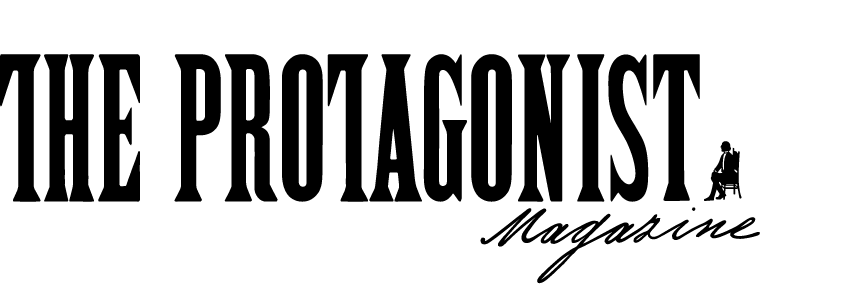Swan Lake In-the-Round
English National Ballet dancers in Derek Deane’s Swan-Lake-in-the-round. Photo: Laurent Liotardo
“Usually, ballet is a silent art save for the music it’s fuelled by.”
“Maybe the message is to overcome fear, take up more space and embrace art wholeheartedly in the here and now. ”
“Deane celebrates the majestic, mystical beauty of Swan Lake, adding many more swan-maidens to the flock, taking up more space, pushing at the boundaries of classical ballet but still captivating the magic, letting the audience experience the escapist’s dream.”
Swan Lake In-the-Round
Derek Deane’s reimagining of the classic of all classic ballets
★★★★
WRITTEN BY DR NO, 14.06.2024
With no traditional proscenium arch or stage-wings, and little in the way of scenery, Derek Deane’s reimagining of the classic of all classic ballets brought a sensational aspect to Swan Lake. First performed in 1997, Deane’s In-the-Round works magnificently at the Royal Albert Hall, danced by a full cast of a capable English National Ballet.
There is a danger of what could have been working a ‘Busby Berkeley’ spectacular for those sitting in the ‘gods’ or risk panto-vibes for those sitting in stalls, closer proximity of the melodrama, but for the most part these obvious pitfalls were avoided. Only once, did I hear a spontaneous single boo-hiss from the crowd as (Von) Rothbart (Junor Souza) tried to put pay to the leading couple’s romance. That was perhaps more provoked by Rothbart’s less than sophisticated costume than Souza’s accomplished and engaging performance as the menacing villain.
Most of the choreography (first performed by the Bolshoi 1877) was assumingly recognisable, changes made adapting to the circular lake for Act II and IV or ‘court’ Act I and III. In-the-Round literally gives nowhere for dancers to hide exposing any flaw. As Odile, in Act III, Emma Hawes skilfully met the challenge by beginning Odile’s solo with the obligatory thirty-two fouttés in tight circle, having to constantly change spot whilst travelling before settling into to the more customary en face. Hawes as Odette/Odile was a beautifully commanding and sinuously muscular swan in white or black tutu, whilst Aitor Arietta as Prince Siegfried, although suitably regal throughout, performed tour de force more assuredly as the story unfolded.
English National Ballet dancers in Derek Deane’s Swan-Lake-in-the-round. Photo: Laurent Liotardo
Usually, ballet is a silent art save for the music it’s fuelled by. In this production every whoosh of fabric gliding by a nearby audience member as they make an entrance, or the little audible pointe-taps of the eight-rather-than-four cygnets added to the quality of the piece rather than detracting. A few accidental heel-clicks within the Czardas in Act III rather than the usual silenced ‘mime’ demonstrated that at least in some of the earthlier scenes there are possibilities to incorporate more traditional character dance aspects in this more experiential classical piece.
In this version, there is no self-sacrifice that sets free all the other enchanted swan maidens, no leap into a ‘better world’ for the eternal lovers, instead Odette and Siegried’s true love triumphs over evil and deceit and (Von) Rothbart is vanquished. In Soviet Russia there was always a happy ending for the rebellious young lovers overcoming an imperialist past and breaking the spell of its dominance for bright new future. Without religion, there is no afterlife. Maybe, for this audience, the message is to overcome fear, take up more space and embrace art wholeheartedly in the here and now.
Gareth Haw as Prince Siegfried in Derek Deanes Swan Lake in the round. Photo: Laurent Liotardo
Sangeun Lee as Odette and Gareth Haw as Prince Siegfried. Photo: Laurent Liotardo
As someone who has seen Swan Lake countless times, often just comparing Principle’s and soloist’s performances, this was a wonderful chance to think and rethink the spectacle and meta-narrative of this middle-European therianthropic fairytale. There have been attempts to modernise this classic before, most populistically, Bourne’s high-camp Swan Lake, which mercilessly poked fun at the supposedly archaic nature of classical ballet, particularly female swans. Impossibly perfect, beautiful creatures of many little girls’ and boys’ dreams to live in another world. A world of art, already mocked and ridiculed by mundane life and contemporary political sensibilities. Deane celebrates the majestic, mystical beauty of Swan Lake, adding many more swan-maidens to the flock, taking up more space, pushing at the boundaries of classical ballet but still captivating the magic, letting the audience experience the escapist’s dream.
English National Ballet dancers performing Pas-de-Douze. Photo: Laurent Liotardo
English National Ballet dancers performing Pas-de-Douze. Photo: Laurent Liotardo
Dr. NO is an interdisciplinary artist, recently working with experimental dance-sculpture-image-sound pieces, such in Lene Vollhardt’s dance-sculpture Swanning (RA, 2022) with Ostroff/Balazs’ 'Bioregenerative Ballet' as part of Ram Shergill’s Bioregenerative Bodies: Posthuman Body Building (MOCA London, 2023) and is currently working with the artist Chris Owen. As warning to stray dogs and complaisant citizens, she wrote and recorded on Adrian Sherwood’s 'Little Cosmonaut/'Маленький космонавт’ Dub No Frontiers (Real World Records 2022). A student of the Bolshoi’s Sulamith and Mikhail Messerer (ballet) she also studied at the LCDS – The Place (dance) and City University London (music).






